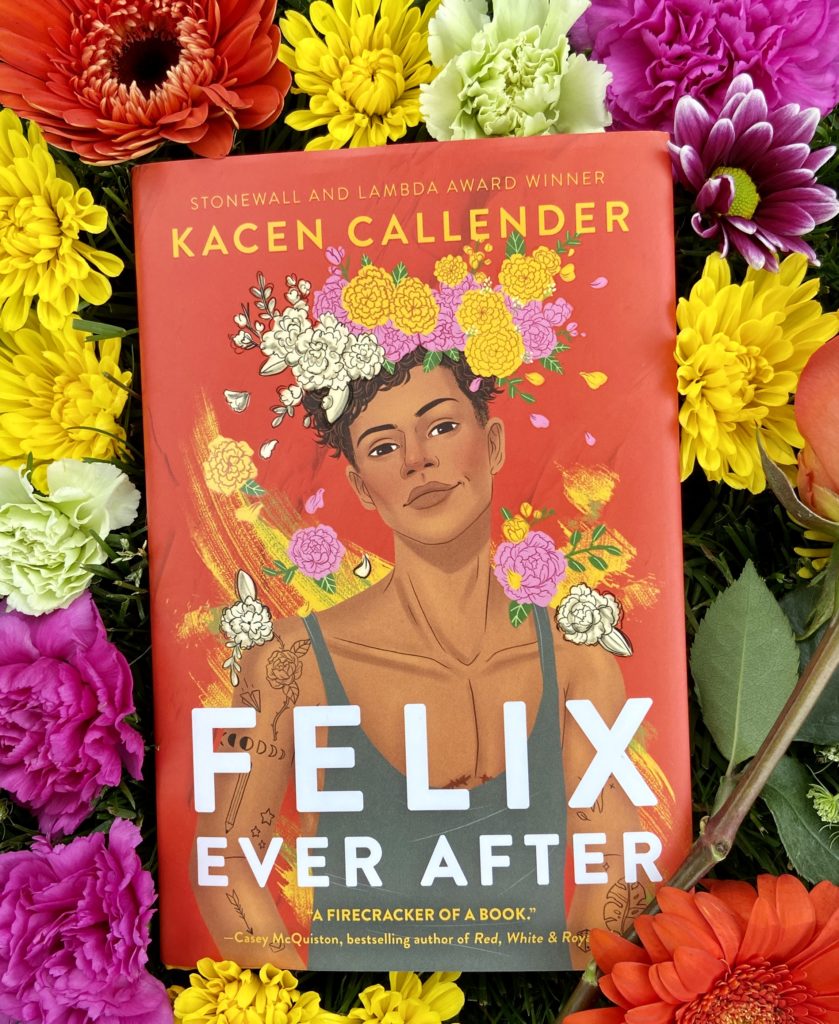“But above all else, I hope Felix can do for even just one reader what Adam did for me: that a reader picks up Felix Ever After and learns more about themselves and their identity, and that becoming who they truly are is a possibility”
-Kacen Callender
When I am writing this review it is early June and we just entered a time when white people (including myself) are realizing the internal bias we have in our reading habits and how few Black authors we have read. After this sudden revelation for many, Felix Ever After became huge in the book community because of its representation of a Black queer trans character as the protagonist. Likewise, Kacen Callender, the Black nonbinary author writes from their perspective of questioning identity. That being said, what spoke to me most about this book before I picked it up was the beautiful cover. The cover features the main character, Felix, in a beautiful artistic representation where he has a colorful flower crown, tattoos on his arms, and he is proudly showing his top surgery scars under his loose tank top. While reading, it is hard to not picture Felix with this beauty, although throughout the book Felix may not feel this way.
Felix Ever After is the book all teenagers need in their life because it is an age when we are all questioning our identity. Felix is a 17 year old transgender boy who goes to an art school in New York City. Felix comes from a place where he is questioning his identity in that he cannot find the right label for himself. Likewise, Felix is working to receive a scholarship to the school of his dreams, Brown University.
“It makes me wonder if I really am Felix, no matter how loud I shout that name.”
While I was reading, I could feel Felix’s emotions and his internal debates. Callender writes so magnificently that I felt like I was in Felix’s inner thoughts while I also could relate to the identity dilemma Felix was going through from my own personal experiences. This book is an excellent example of representation for readers of all ages, especially teenagers. Not only is Felix a character of multifaceted identities, but the friends that surround him throughout the book have characteristics I feel all can relate to. What I loved most about this book was the support system Felix had. Felix’s friends cared so deeply for him and were there to support Felix throughout the book. Every time one of them stood up and fought for Felix’s right to occupy a space, I cried a little bit because everyone deserves that love.
“The fact that I’m Black, the fact that I’m queer, the fact that I’m trans. ‘It’s like every identity I have… the less lovable I feel.”
This book is so dynamic where I feel I cannot touch on everything that Callender writes in Felix Ever After. This book not only represents a multifaceted character who is questioning their identity but they also writes about racism within the queer community. Callender writes incredible examples of what allies look and sound like and how white queer individuals also need to be allies to BIPOC in the LGBTQIA community. This book is perfect for the time we are living in as we all must remember this June and forever that the first Pride began as a riot started by a Black transgender woman named Marsha P. Johnson. I highly recommend this book for everyone, but it will especially speak to young adults who are looking for someone to relate to.



Pingback: What Claudia Read in June | Feminist Book Club
Pingback: Queer Books to Gift this Holiday Season & Bookstores to Buy From |